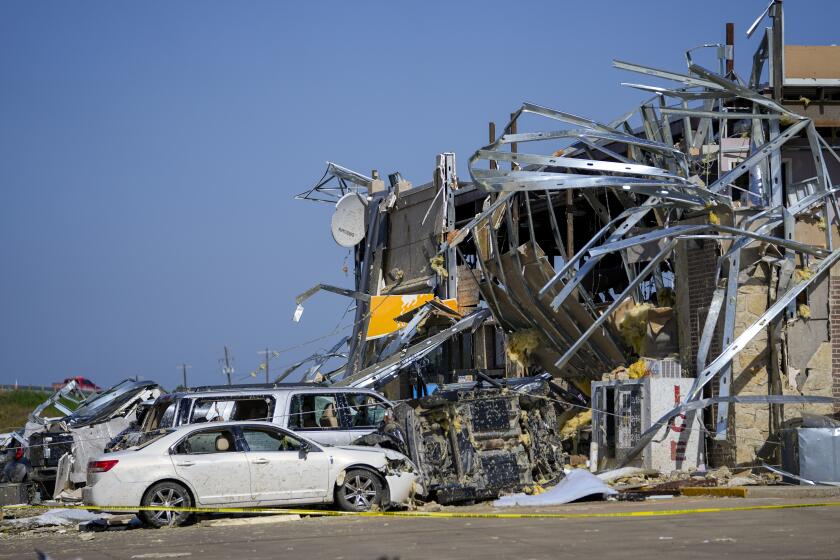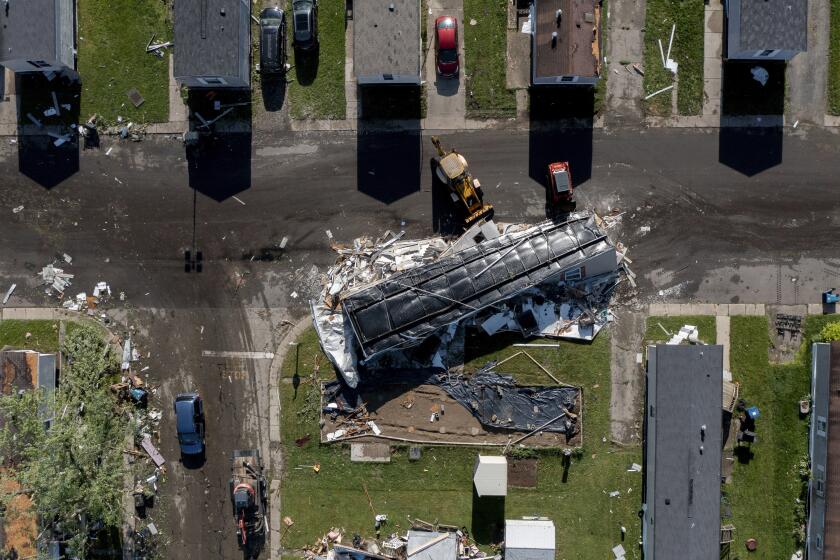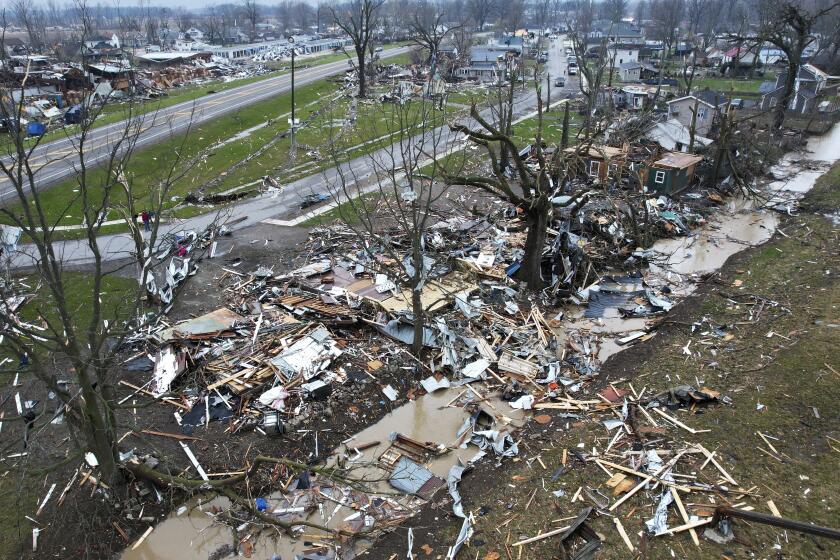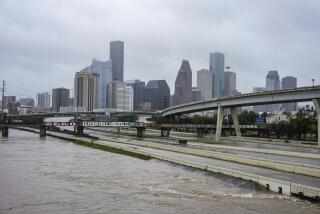Texas battered again by storms after deadly weekend tornadoes across the U.S.
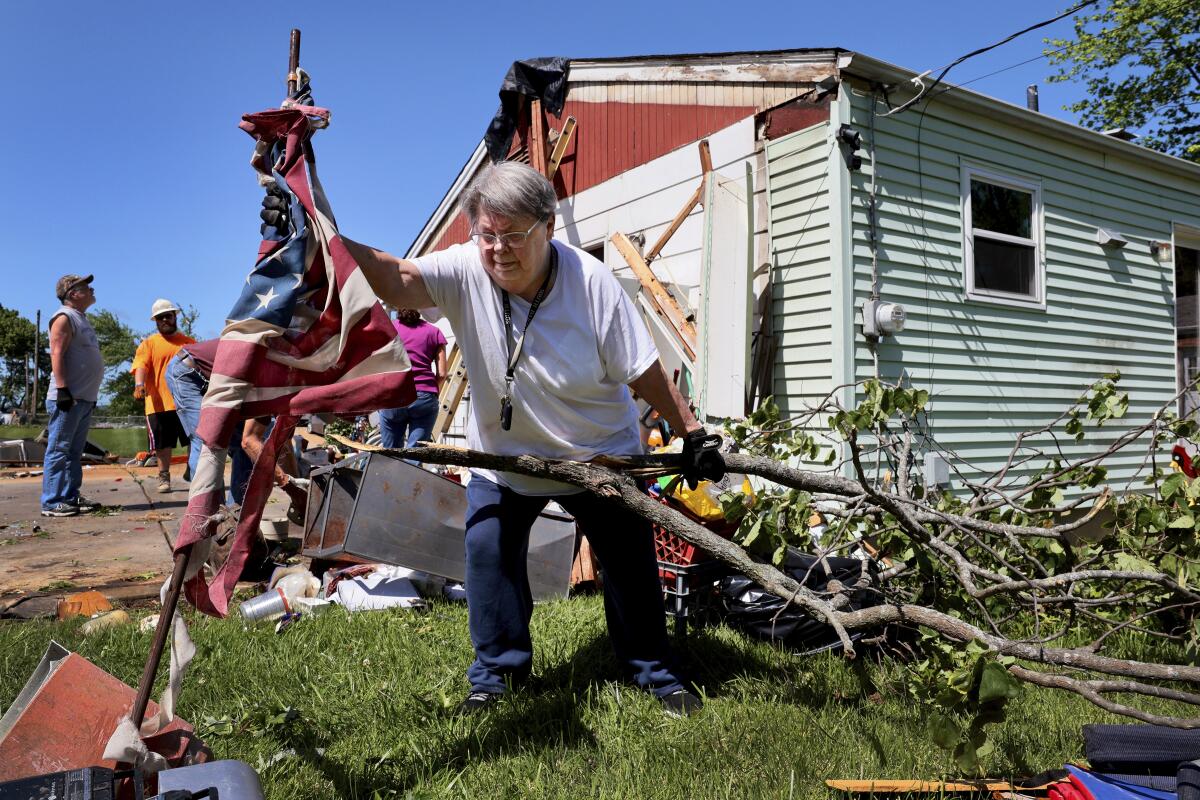
Strong storms with damaging winds and baseball-sized hail pummeled Texas on Tuesday, leaving more than 1 million businesses and homes without power as much of the U.S. recovered from severe weather, including tornadoes, that killed at least 25 people over the Memorial Day weekend.
Widespread power outages were reported in the region, which includes Dallas and Fort Worth, where an oppressive, early-season heat wave reaching into triple digits added to the misery. Nearly 800,000 customers lacked electricity Tuesday, according to PowerOutage.us.
Voters in the state’s runoff elections found some polling places without power. Roughly 100 voting sites in Dallas County were knocked offline. Dallas County Judge Clay Jenkins declared a disaster area and noted that some nursing homes were using generators. “This ultimately will be a multiday power outage situation,” Jenkins said Tuesday.
More rough weather and heavy rains were forecast for the Dallas area Tuesday night.
A series of powerful storms in the central and southern U.S. over the holiday weekend left a wide trail of destroyed homes, businesses and power outages.
Destructive storms over the weekend caused deaths in Texas, Oklahoma, Arkansas, Missouri, Kentucky, North Carolina and Virginia.
Seven people were killed in Cooke County, Texas, from a tornado that tore through a mobile home park Saturday, officials said, and eight deaths were reported across Arkansas.
Two people died in Mayes County, Okla., east of Tulsa, authorities said. The injured included guests at an outdoor wedding. A Missouri man died Sunday after a tree limb fell onto his tent as he was camping.
Kentucky Gov. Andy Beshear said at a news conference Monday that five people had died in his state.
A possible tornado damaged a high school and a half-dozen homes in Pennsylvania on Monday night. No injuries were reported, but school was canceled in Mahanoy City, Pa., said David Truskowsky, spokesperson for the city’s fire department.
Severe storms batter parts of the Midwest with heavy rain, gusty winds and tornadoes that forecasters warn could spill out of the region.
Roughly 160,000 homes and businesses lacked electricity Tuesday following the weekend storms in Kentucky, Arkansas, West Virginia and Missouri.
It has been a grim month of tornadoes and severe weather in the nation’s midsection.
Tornadoes in Iowa last week left at least five people dead and dozens injured. Storms killed eight people in Houston this month. April had the second-highest number of tornadoes on record in the country. The storms come as climate change contributes in general to the severity of storms around the world.
Late May is the peak of tornado season, but the recent storms have been exceptionally violent, producing very strong tornadoes, said Victor Gensini, a meteorology professor at Northern Illinois University.
“Over the weekend, we’ve had a lot of hot and humid air, a lot of gasoline, a lot of fuel for these storms. And we’ve had a really strong jet stream as well,” Gensini said. “That jet stream has been aiding in providing the wind shear necessary for these types of tornadoes.”
Severe storms with suspected tornadoes have damaged homes and businesses and killed at least three people in the Central U.S.
Harold Brooks, a senior scientist at the National Severe Storms Laboratory in Norman, Okla., said a persistent pattern of warm, moist air is to blame for the string of tornadoes over the last two months.
That air is at the northern edge of a heat dome bringing temperatures typically seen at the height of summer to late May.
The heat index — a combination of air temperature and humidity to indicate how the heat feels to the human body — neared triple digits in parts of south Texas on Monday. Extreme heat was also forecast for San Antonio and Dallas.
In Florida, Melbourne and Fort Pierce set new daily record highs Monday. Both hit 98 degrees. Miami set a record high of 96 on Sunday.
For more information on recent tornado reports, see the Associated Press Tornado Tracker.
Seewer writes for the Associated Press. AP journalists around the United States contributed to this report.
More to Read
Sign up for Essential California
The most important California stories and recommendations in your inbox every morning.
You may occasionally receive promotional content from the Los Angeles Times.
